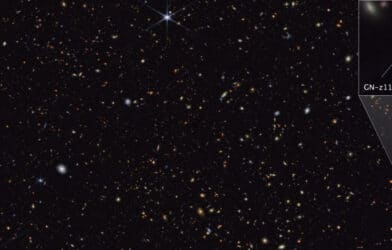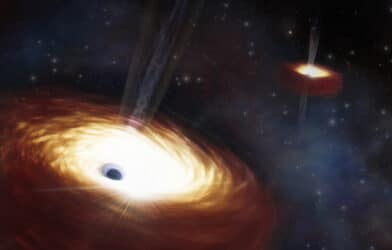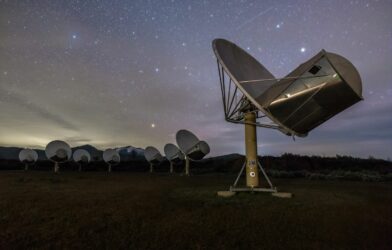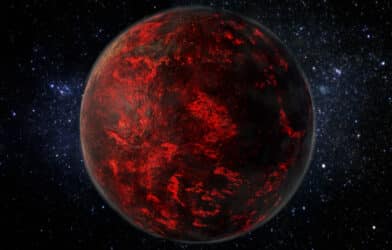A star has been observed in the process of consuming another planet, offering a foreboding glimpse into Earth’s eventual fate. The rocky planet ventured too close and was swallowed whole by its parent star. This marks the first time astronomers have captured such a violent destruction.
Images from the Gemini South Telescope in Chile display the dying Sun-like star devouring the distant exoplanet. The event was characterized by a prolonged, low-energy outburst from the star, which is located approximately 13,000 light-years away. This event foreshadows what will happen to Earth when our own Sun nears the end of its life.
Sun-like stars undergo nuclear reactions that convert hydrogen into helium. When hydrogen is depleted, they burn heavier elements such as helium, carbon, and oxygen, causing the star to expand dramatically and transform into a red giant.
Ryan Lau, a co-author from the National Optical-Infrared Astronomy Research Laboratory (NOIRLab) in Tucson, Arizona, commented on the significance of these findings, emphasizing the transient nature of our existence. “These observations provide a new perspective on finding and studying the billions of stars in our Milky Way that have already consumed their planets,” he said in a statement.
Data confirms that stars expand anywhere from 100 to 1,000 times their original size, eventually consuming the inner planets of the solar system. Such events are estimated to occur only a few times each year across the entire Milky Way. Until now, only the aftermath of these events had been captured on camera.
The powerful scanning device revealed what is likely to happen to Mercury, Venus, and Earth when our Sun enters its death throes in about five billion years. Observing the final stages of a planetary system provides insight into the ultimate days of inner planets far into the future.
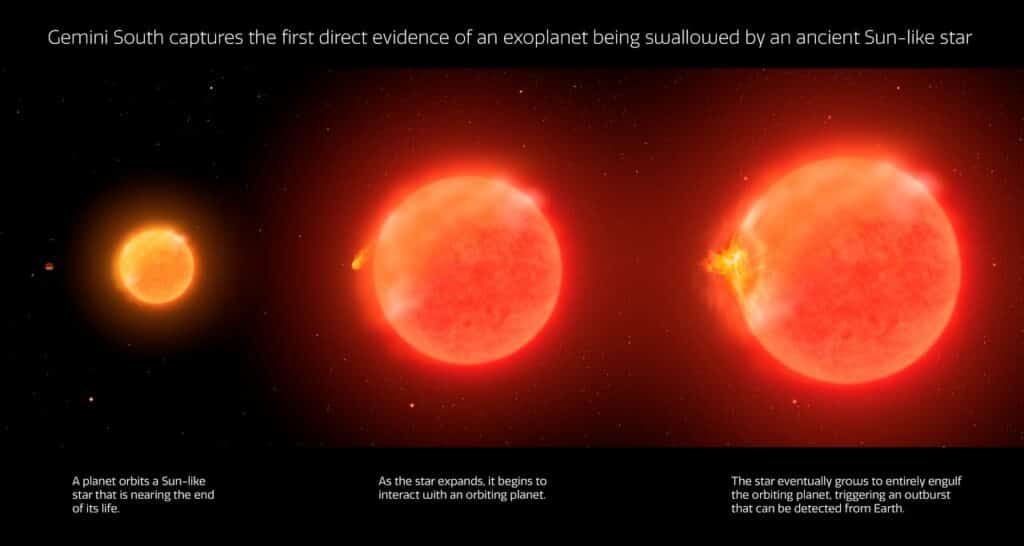
Lau explained that these observations offer a new perspective on finding and studying the billions of stars in our Milky Way that have already consumed their planets. The star’s surface expanded to envelop the planet, triggering a spectacular burst of energy and material. This event also slowed the planet’s orbital velocity, causing it to plunge into the star.
The first hints of this event were discovered through optical images from the Zwicky Transient Facility at the Palomar Observatory in California. Confirmation came from infrared coverage provided by NASA’s NEOWISE (Near-Earth Object Wide-field Infrared Survey Explorer), which can see into dusty environments.
In a few billion years, our Sun will become a red giant so large that its surface will reach Mars’ current orbit. Earth may also expand slightly outward, but not enough to prevent it from being pulled into the Sun and disintegrating rapidly.
Martin Still, a program director, praised the Gemini South Telescope’s role in expanding our understanding of the universe and its support of predictions for our planet’s future. He emphasized that this discovery showcases the impressive achievements possible through world-class telescope operations and cutting-edge scientific collaboration.
The short-lived optical outburst lasted around 100 days and was accompanied by a bright, long-lived infrared emission that slowly faded over six months. Lead author Kishalay De, from MIT, said that witnessing such events in real time in our own Milky Way serves as a testament to Earth’s almost certain future as a planet.
The ejected material consisted of approximately 33 Earth masses of hydrogen and 0.33 Earth masses of dust. Lau noted that this material represents star and planet-forming substances being recycled back into the interstellar medium as a result of the star consuming the planet.
The research team estimated the star to be up to 1.5 times the mass of our Sun and the planet to be up to ten times the mass of Jupiter.
The study has been published in Nature.
South West News Service writer Mark Waghorn contributed to this report.
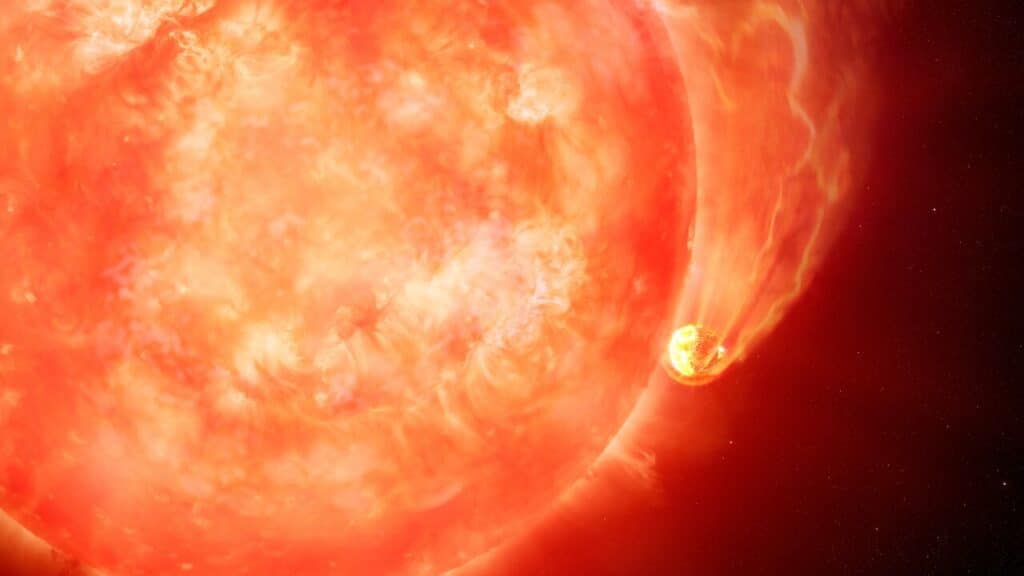
-392x250.png)
